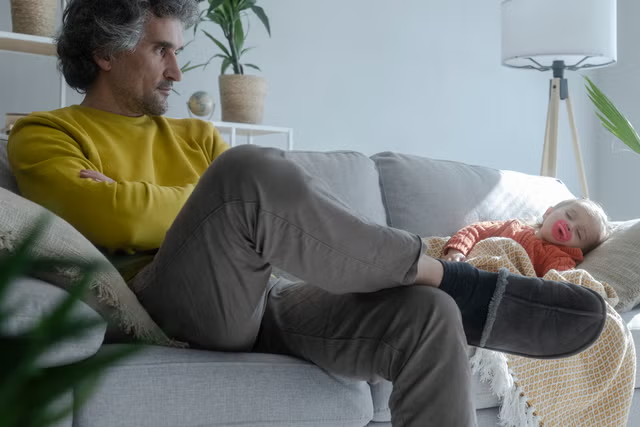Support truly
independent journalism
Support Now
Our mission is to deliver unbiased, fact-based reporting that holds power to account and exposes the truth.
Whether $5 or $50, every contribution counts.
Support us to deliver journalism without an agenda.

Louise Thomas
Editor
The shingles vaccine given to people on the NHS could decrease risk of dementia by 17%, a new study suggests.
University of Oxford researchers found that the Shingrix vaccine is linked to a “significantly” lower risk of dementia in the six years after vaccination than the previously-used Zostavax jab, following a study on more than 200,000 people.
It’s too soon to say what this means in terms of dementia prevention, as more research is needed, but experts say the findings are “convincing”.
But, what exactly is shingles and how does the vaccine work?
What is shingles?
“Shingles, also known as herpes zoster, is a viral infection characterised by a painful, vesicular rash,” says Carolina Goncalves, superintendent pharmacist at Pharmica.
It is caused by the reactivation of the varicella zoster virus, the same virus that causes chickenpox, according to the NHS.

“After a person gets chickenpox, the virus stays dormant inside the body for life, not causing any problems or symptoms,” explains Dr Sasha Dhoat, consultant dermatologist at Stratum Clinics. “But our immune system naturally weakens over time as we age, with illness, stress or immunosuppressant medications, which may allow the usually inactive virus to reactivate, causing shingles along a nerve strip, hence only one side of the body.”
What are the symptoms?
The first signs of shingles are a tingling, burning sensation, sensitivity to touch, or painful feeling in an area of skin, explains Dhoat.
“This is often accompanied by headache or feeling generally unwell. A few days later, the classic single stripe of blisters that wraps around the left side or the right side of your torso usually appears, but can occur anywhere on the body including the face,” says Dhoat.

Marian Nicholson MBE, director of the Shingles Support Society, adds: “If you develop some weird nerve sensations on your body, usually face or ribs, and looking back on it you can’t think of any good reason for it, then it could well be the beginning of a shingles outbreak.
“Sometimes the nerve sensations are pretty mild and rarely cause any irritations, but in other people these pains are absolutely intolerable.”
Who is most at risk?
As we age, the likelihood of developing shingles increases.
“Individuals at higher risk of developing shingles include older adults, particularly those over 50, due to the natural decline in immune function known as immunosenescence, which facilitates the reactivation of the varicella zoster virus,” explains Goncalves.
“Immunocompromised individuals are also at elevated risk, including those with medical conditions such as HIV/AIDS, leukaemia, lymphoma and other cancers. Physical or emotional stress and trauma to the area of the affected nerve can also precipitate an outbreak.”

Nicholson adds: “Other trigger factors for developing shingles are the same as all the usual ill-health causes, such as being ultra-tired, ultra-stressed and in bad health for one reason or another.”
Can there be complications?
The most common complication the virus can trigger is post-herpetic neuralgia.
“Post-herpetic neuralgia is a persistent pain lasting for around 90 days after the rash and blisters heal,” explains Goncalves. “Shingles can also cause scarring and pigmentation changes on the skin as the reactivated varicella zoster virus damages skin cells, leading to intense inflammation and blistering.
“Lastly, superinfection of skin lesions can occur as a result of shingles due to the blisters breaking open, creating a pathway for bacteria to enter and infect the damaged skin.”
When should you see a doctor?

It’s important to seek advice, especially if symptoms are severe or you may be more at risk of complications, and the sooner you get medication, the better.
“You should see a doctor if the pain and rash occur near an eye, if you are 50 or older, if you or someone in your family has a weakened immune system (e.g. cancer or chronic illness), or the rash is widespread and painful,” advises Dhoat. “If you are not sure, call 111 for advice.”
What treatments are available?
There is no definitive cure for shingles but oral antivirals are often prescribed by GPs.
“Early treatment with prescription oral antivirals, such as Aciclovir, may reduce the infection period and lessen the chance of any complications arising,” says Dhoat. “These are best taken within three days on onset of symptoms.”
Paracetamol can help ease pain, if suitable, and keeping a rash clean is also important to prevent infections.
How does the vaccine work?
To lower the risk of shingles, the Shingrix vaccine is available on the NHS for certain groups.
“Shingrix prevents shingles by boosting the immune system’s ability to fight the varicella zoster virus,” explains Goncalves. “It uses a viral protein and an adjuvant to stimulate the production of antibodies and T-cells, which help prevent the virus from reactivating, thereby reducing the likelihood of developing shingles or associated complications.”
Nicholson adds: “It is a two-dose vaccine, several months apart, and GPs are delivering it to people who reach 65 and people in their 70s [who’ve not previously had it]. Anyone who is over 50 is allowed to buy it for themselves at their local chemist.”
Talk to your doctor if you are concerned.
Disclaimer: The copyright of this article belongs to the original author. Reposting this article is solely for the purpose of information dissemination and does not constitute any investment advice. If there is any infringement, please contact us immediately. We will make corrections or deletions as necessary. Thank you.



